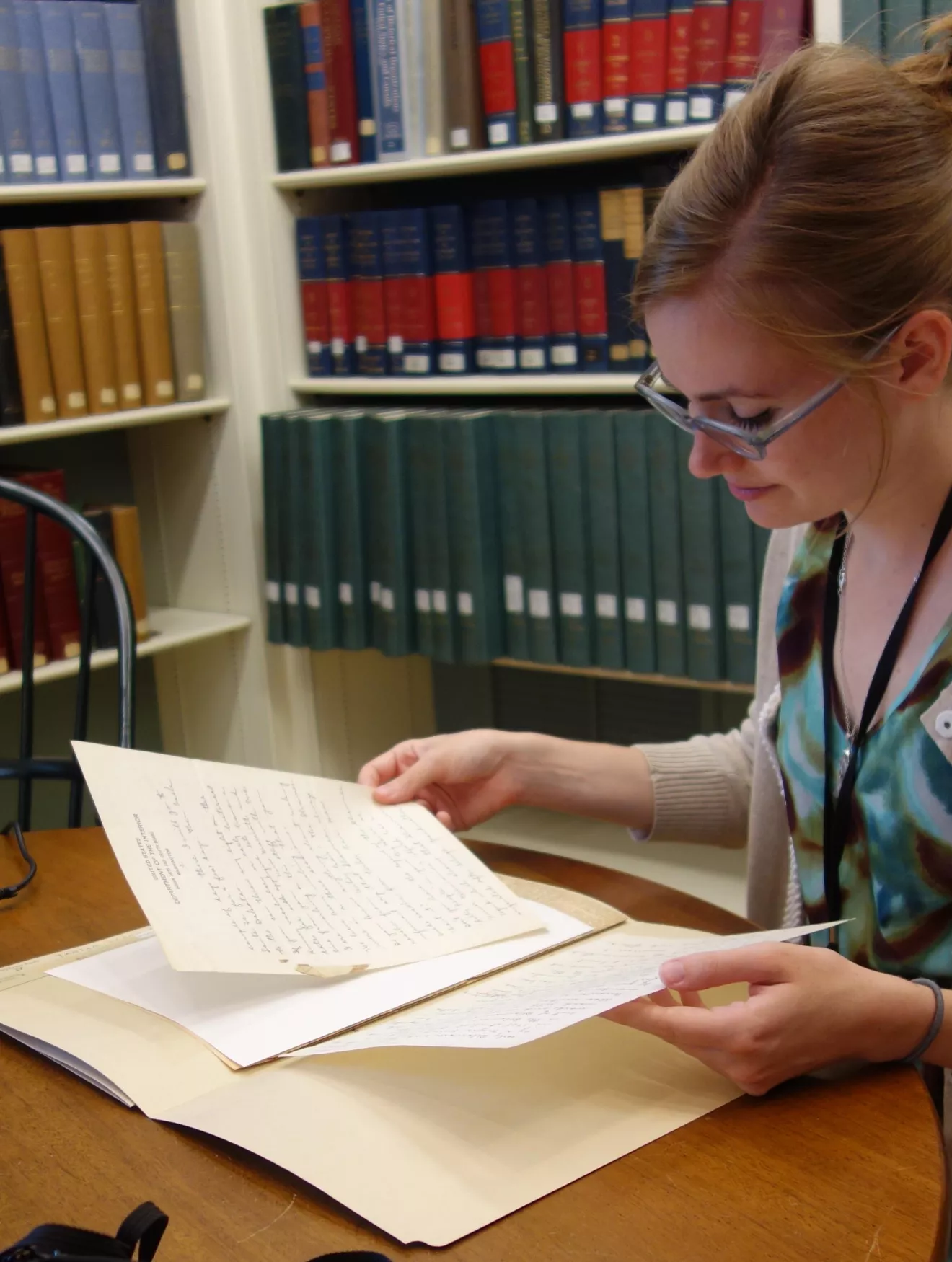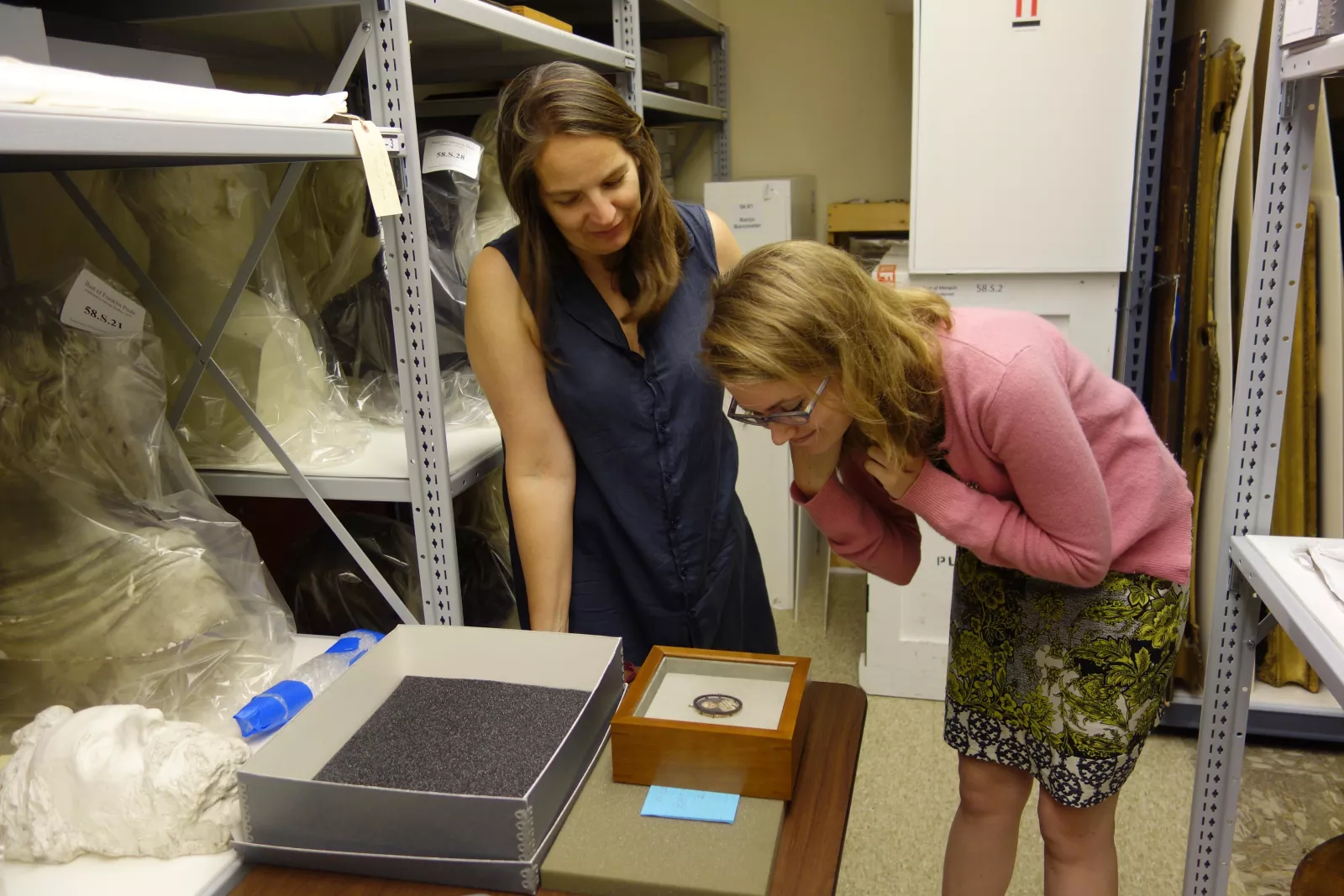
This past summer, Michelle Smiley, Ph.D. candidate in History of Art, held a McPherson-Ridgway curatorial internship at the American Philosophical Society, working on an upcoming exhibition “Gathering Voices.” The exhibit will consider the history of the collection and later preservation of Native American languages starting with Thomas Jefferson and continuing today with the current activity of CNAIR (the Center for Native American and Indigenous Research) at the APS. In particular, the show examines the development of such wide-ranging disciplines as linguistics, ethnology, and anthropology and the methodological shift in collecting from such techniques as "salvage anthropology" to the current emphasis on revitalization.
Michelle, who studies 19th-century photography, focused her time on a cache of photographic materials taken by anthropologists Irving A. Hallowell and Frank Speck from the 1920s through the 1940s now housed at the APS. These photographs were digitized and sent back to the communities from which they came. Through this process of digital knowledge sharing details about the individuals pictured and events were able to come to light, informing both the preservation and revitalization of the cultural heritage of these native communities as well as providing the library with previously unknown information about their own artifacts. “The most compelling aspect of this exhibit,” Michelle reports, “was the ability to consider the collections both at the library and the museum as constantly in evolution both in use and meaning.”
During her time at the APS, Michelle also began a smaller project looking at the optical instruments and papers of Robert Hare, a figure that will loom large in her dissertation on the early developments of photography in America.
